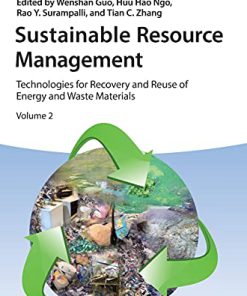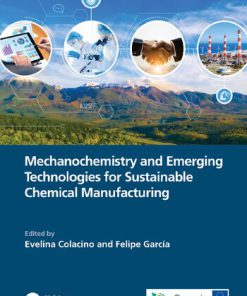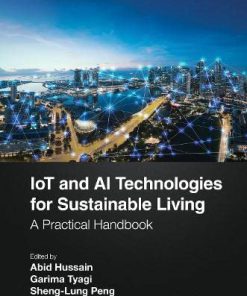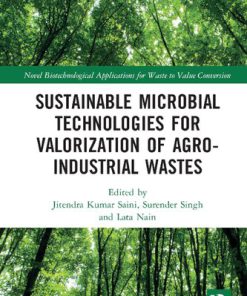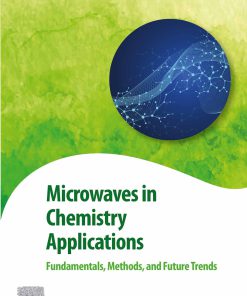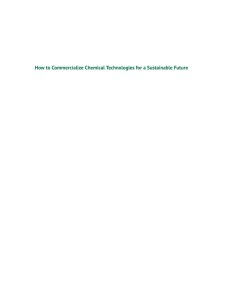Chemistry for Sustainable Technologies 2nd Edition by Neil Winterton 1788019334 9781788019330
$50.00 Original price was: $50.00.$25.00Current price is: $25.00.
Chemistry for Sustainable Technologies 2nd Edition by Neil Winterton – Ebook PDF Instant Download/Delivery: 1788019334, 9781788019330
Full download Chemistry for Sustainable Technologies 2nd Edition after payment
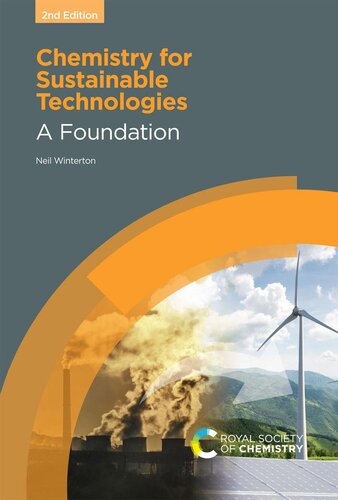
Product details:
ISBN 10: 1788019334
ISBN 13: 9781788019330
Author: Neil Winterton
Chemistry for Sustainable Technologies 2nd Table of contents:
1 Scope of the Book
References
2 Setting the Scene
2.1 The State of the Planet
2.2 ‘Tipping Points’ and the ‘Trilemma’
2.3 Human Population and Its Growth
2.3.1 The Anthropocene
2.4 Our Attitudes to Technology and How We Come By Them
2.5 Science, Controversy and the Media
2.6 Chemistry and the Chemical Industry
2.7 Why We Cannot Turn the Clock Back
2.8 Synthetic Bad, Natural Good?
2.9 Decision-making and ‘Wicked’ Problems
2.10 Sustainable Development and Hyperdisciplinarity
2.10.1 Economics
2.10.2 Scale
2.11 The Role of the Expert
Further Reading
Webliography
References
3 Sustainability and Sustainable Development
3.1 What is Sustainability? And is it Different from Sustainable Development?
3.2 Environmental Burden or Carrying Capacity
3.2.1 The IPAT Equation
3.2.2 Improvements in the Efficiency of Material Resource Use
3.2.3 The Sustainability Challenges
3.3 Footprints: Ecological, Carbon and Water
Further Reading
Webliography
References
4 Science and Its Importance
4.1 What is Science?
4.1.1 History of Science
4.1.2 Philosophy of Science
4.1.3 Sociology of Science
4.2 The Scientific Method
4.3 Hypotheses, Models, Theories and Laws
4.4 Exchange of Scientific Knowledge: Peer Review
4.5 Science and Authority
4.6 Science and Technology
4.7 Good Science, Bad Science and the Media
4.8 Care in What We Say and How We Say It
4.9 Ignorance, Uncertainty and Indeterminacy
Further Reading
Webliography
References
5 Chemistry of the Environment
5.1 Environmental Science and Environmental Chemistry
5.2 Geology and Geochemistry
5.3 Global Geochemical Cycling of the Elements
5.4 The Carbon Cycle I: The Role of Carbon Dioxide
5.5 The Sun
5.6 The Greenhouse Effect
5.7 Emission Metrics: Global Warming Potential
5.8 The Carbon Cycle II: Methane and Its Atmospheric Lifetime
5.9 The Nitrogen Cycle: Nitrogen(i ) Oxide
5.10 Human Impact on the Environment
5.11 Earth Systems Science
5.12 Geoengineering
5.12.1 Solar Radiation Management
5.12.2 Carbon Dioxide Removal
Further Reading
Webliography
References
11 Sustainable Energy, Fuel and Chemicals
11.1 Where We Are: The Scale of the Challenge
11.2 Units and Definitions
11.3 Primary, Secondary Renewable and Sustainable Energy
11.3.1 Primary Sources
11.3.2 Secondary Sources: Energy ‘Carriers’ or ‘Vectors’
11.3.3 Energy Consumed to Power Energy-producing Systems
11.3.4 Intermittency and Unpredictability
11.3.5 Point and Diffuse Sources: The Importance of Power Density
11.3.6 Renewable Resources
11.3.7 Are Renewables Sustainable?
11.4 Energy: Conventional Sources
11.4.1 Fossil Sources: Future Availability and Continued Use
11.4.2 Hydroelectricity
11.4.3 Nuclear Fission
11.5 Energy: Renewable Sources
11.5.1 Geothermal
11.5.2 Wind Power
11.5.3 Solar Power
11.5.4 Ocean Sources
11.5.5 Nuclear Fusion
11.6 Secondary Energy Sources and Energy Storage
11.6.1 Electricity Grids
11.6.2 Energy Storage
11.7 Energy Carriers or Vectors
11.7.1 Hydrogen
11.7.2 Methanol
11.7.3 Ammonia
11.7.4 Desertec
11.8 Carbon Dioxide Emissions: Capture, Storage and Use
11.8.1 Carbon Dioxide Capture
11.8.2 Carbon Sequestration or Storage
11.8.3 Carbon Use
Further Reading
Webliography
References
People also search for Chemistry for Sustainable Technologies 2nd :
sustainable chemistry and technologies for circular economy
chemistry for sustainable future
sustainable chemistry examples
chemistry for sustainable development
Tags:
Neil Winterton,Chemistry,Sustainable Technologies
You may also like…
Engineering - Environmental
Chemistry - Technical & Industrial Chemistry
Computers - Artificial Intelligence (AI)
IoT and AI Technologies for Sustainable Living: A Practical Handbook 1st Edition Abid Hussain
Technique - Automation
Biology and other natural sciences - Plants: Agriculture and Forestry
Chemistry - Organic Chemistry
Chemistry - Organic Chemistry
Study Guide and Solutions Manual for Organic Chemistry 8th edition Neil E. Schore



